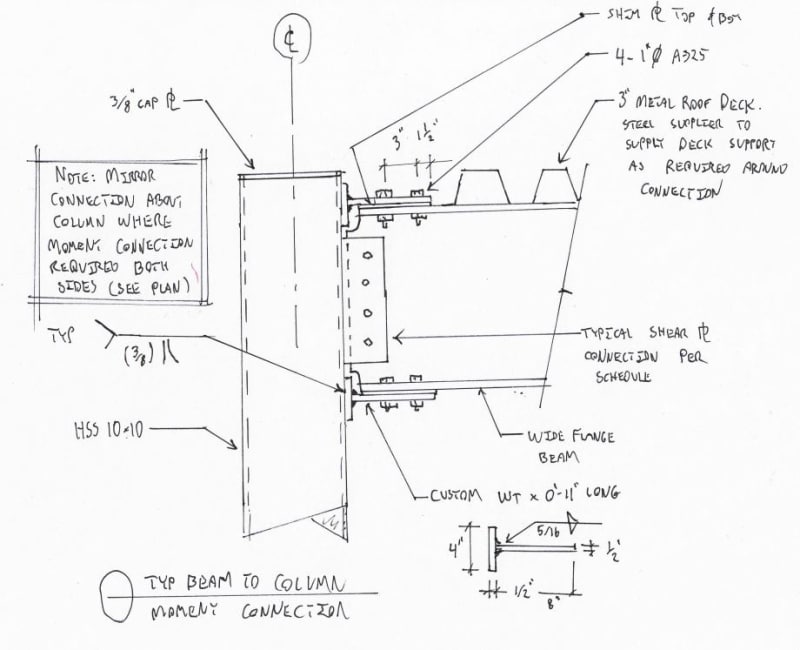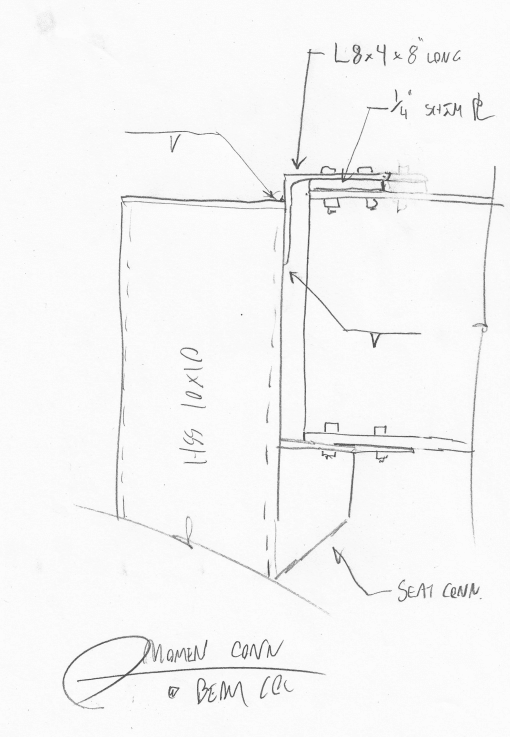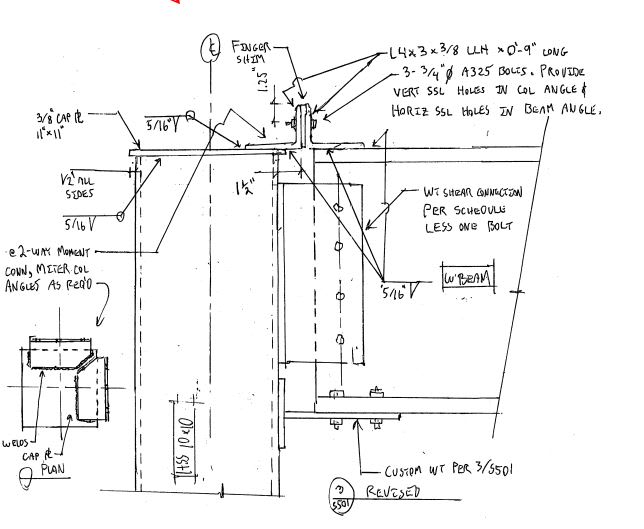structSU10 said:
might be funky, but could you slot the top WT at the web and put it under the beam top flange? leave "tabs" wide enough to accept the bolts.
That's an interesting concept if I could make the geometry flush out. I had considered it previously but rejected it because I was concerned that severing the tee web like though would compromise stiffness too much. However, the FMC method has you essentially ignore closing moment connections and rely predominantly on opening moment connections. And this version of the connection might be uniquely suited to that. Flexible for opening and stiff for closing...
structSU10 said:
could also try to hollo bolt on the WT or something.
This may be the way to go really. Perhaps this is what WArose had in mind too. With a 10x10 HSS left open, do you think it might be possible to use conventional bolts rather than Hollow? To a degree, I'd think that one could reach there arm in there to get the job done. Maybe provide an erection seat. Not sure if that would violate some OSHA rule or something though.
jayrod said:
To me, a flexible moment connection could be as simple as a good shear connection. There's no way a simple shear connection couldn't transfer some load from racking. But as you indicated, we aren't here to debate the use/effectiveness of FMCs.
I'm EOR here but I'm dealing with an unusually sophisticated client which limits my options. I agree that a good shear connection can transfer some moment, particularly joint opening moment, but I'm reluctant to rely on such a connection as my entire lateral system if it doesn't match the handful of connection styles that I've seen presented and tested in the literature. And what I've seen in the literature is overwhelmingly bolted on clip angles and tees at the flanges. I may already be off reservation in that I've not seen any HSS examples. The HSS situation tends to favor welding rather than bolting and, in my mind, that makes it tougher to provide the nebulous, ill-defined degree of connection ductility required for FMC.
sail said:
FMC may only be flexible for a certain range of loading and it is difficult to accurately establish that range.....I would make it a moment conn and design the col accordingly....that way, I take all the uncertaintyout of the problem.....
You take out the uncertainty but, additionally, also the primary benefits of using the system in the first place (beams, columns, and connections not designed for gravity moments). I'm with you in spirit as I'd very much prefer to do conventional moment frames. That said, with the FMC path decision already in the rear view mirror, I'll not be neutering any of the beneficial aspects going forward.
kiltor said:
Can you make it into (probably cant but ill still ask) some sort of cap-plate connection?
JP said:
Why not run the WF over the top of the HSS and then cap plate the HSS and bolt it to the beam? Kind of like a rotated end plate moment connection.
The whole idea here is to be able to disregard gravity moments with some degree of credibility. I don't see how that would be possible with this connection style at interior column joints. And, again, it's not a scheme that's gotten any air time in the literature.
canwesteng said:
What's the lateral load look like?
It's not notional as it's the primary lateral system for the building. That said, nothing's working to hard and it's mostly drift control governing things.
canwesteng said:
Otherwise, I don't like the weld from your T's to the HSS. They don't look strong enough to fully develop the bolts or the stem of the T.
Thanks, I'll check it out once I move past the concept stage. I'm not trying to fully develop anything really. That said, it would be nice if weld failure could not be the governing mode.
I like to debate structural engineering theory -- a lot. If I challenge you on something, know that I'm doing so because I respect your opinion enough to either change it or adopt it.




